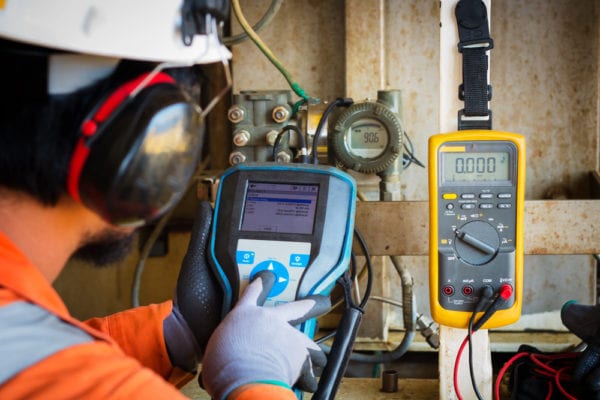
What is Preventive Maintenance?
Preventive maintenance (PM), sometimes called preventative maintenance, is maintenance that is proactively performed on an asset with the goal of lessening the likelihood of failure, reducing unexpected downtime, and prolonging its useful life.
In practice, this means regularly checking equipment for small problems and fixing them before failure can occur. Preventive maintenance activities may consist of inspections, calibrations, lubrications, adjustments, cleaning, or part replacements. As preventive maintenance activities are performed, workers also document an asset’s condition so they know when future maintenance may be needed.
Why Is PM Important?
Imagine what would happen if you waited until your car’s engine failed before you got an oil change. Each time this occurs, you would have to pay for an emergency tow truck to take it to a repair shop where the engine can be fixed. That’s if there is no catastrophic damage. Otherwise, you must source a rebuilt engine (usually thousands of dollars) and install it. Meanwhile, you must also find an alternate mode of transportation.
Clearly, waiting for your engine to fail is not only inconvenient, but also costly in terms of money and time. It would be much easier to try to prevent the breakdown before it happens. This same logic applies to the equipment and assets you work with every day.
Types of Preventive Maintenance
Preventive maintenance can take many forms. The two most common are:
- Calendar-based preventive maintenance: Maintenance activities are scheduled based on a specific date, or a time interval such as number of days.
- Runtime-based preventive maintenance: Maintenance activities are scheduled based on a specific measured runtime unit, such as miles, hours, or level.
Based on our definition above, the following may also be categorized as types of preventive maintenance:
- Condition-based maintenance (CbM): Maintenance is scheduled when a monitored condition characteristic of an asset’s normal operation, such as temperature, vibration, pressure, meter readings, etc., is out of its normal measured range.
- Predictive maintenance (PdM): Maintenance is scheduled by analyzing real-time equipment data and data from previous breakdowns.
Preventive Maintenance Examples
The following are examples of preventive maintenance examples, based on the types defined earlier in this article.
- A work order for cleaning the gutters is created every 6 months (calendar-based).
- An oil change work order is assigned to a technician after every 5,000 miles traveled by a fleet vehicle (runtime-based).
- An equipment sensor shows that a shaft is vibrating beyond normal limits. A work order is created with instructions to inspect, and potentially replace, the bearings (condition-based maintenance).
- After analyzing real-time and historical maintenance data, an analyst concludes that a machine will likely fail after running for 1,000 hours. A work order is created to inspect a subassembly after 950 more hours of runtime (predictive maintenance).
Advantages and Disadvantages of Preventive Maintenance
Advantages
There are a number of advantages of preventive maintenance compared to other types of maintenance, such as corrective maintenance (CM).
- Better Preparation for Maintenance Work: Since maintenance activities can be planned ahead of time, you can efficiently coordinate any required parts, supplies, and labor resources before work is due.
- Improved Scheduling: PM activities can be scheduled to fit into the production schedule or during planned plant shutdowns.
- Lower Overall Maintenance Costs: Unplanned maintenance is often more expensive due to excessive downtime, loss of production, and expedited shipping fees. The cost of preventive maintenance activities is more controlled. In fact, companies typically save 12-18% on total maintenance costs using preventive maintenance.
Disadvantages
Preventive maintenance is an important part of every maintenance strategy. However, preventive maintenance does have some limitations.
- More Time Needed to Plan: Designing a PM plan takes time, effort, and ability. This project requires dedicated resources, which may not always be readily available.
- Increased Costs from Excessive Maintenance: Performing maintenance on equipment that doesn’t need it leads to unnecessary downtime, labor costs, and part usage. Additionally, incorrect re-assembly, misalignment, or other errors caused by nonessential interactions can actually reduce the reliability of your assets.
- More Maintenance Resources are Required: Preventive maintenance requires additional workers, parts, and budget to implement correctly. However, the long-term benefits you will receive will far outweigh this requirement.
When to Use Preventive Maintenance
Even with all its benefits, it may not always be clear when to use preventive maintenance. Ideally, you’ll want to use it to extend the lifespan of all your assets, but if you’re just getting started, you need to prioritize.
At a minimum, preventive maintenance should be applied to assets that are critical to production, where their ability to perform their job is of high importance. From there, you can expand your plan to include non-critical equipment and facilities.
Using a PM program can also better organize the activities of the maintenance department. Carefully thinking through your maintenance operations helps you better forecast the demand for maintenance resources and make it easier to balance the work load. The creation of standardized PM task lists will ensure that all employees are performing work in the same way. Also, using a preventive maintenance plan as a guide keeps the team on task and makes sure that maintenance is being done when it’s needed.
How Preventive Maintenance Software Helps
Preventive maintenance simplifies and standardizes complex maintenance processes. However, because PMs will likely be performed on a large number of assets, it is nearly impossible to effectively track everything manually. Preventive maintenance software, like FTMaintenance computerized maintenance management system (CMMS) software, stores all of your maintenance data in one place so you can easily keep track of all your PM activities.